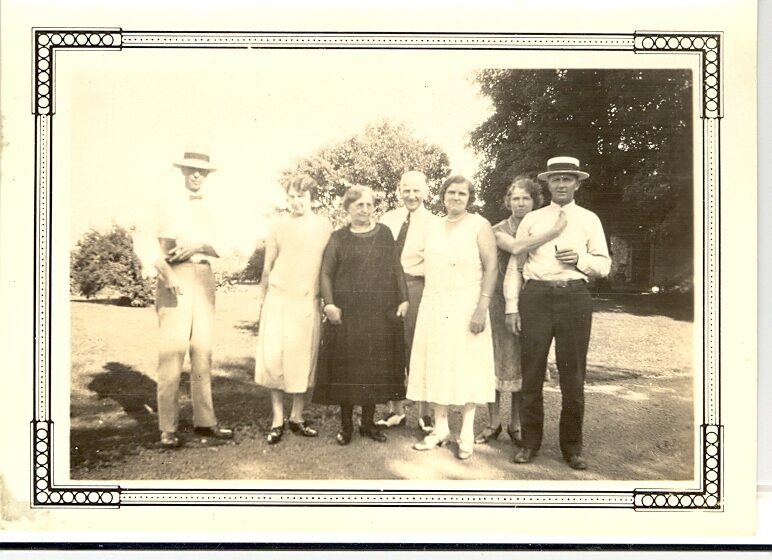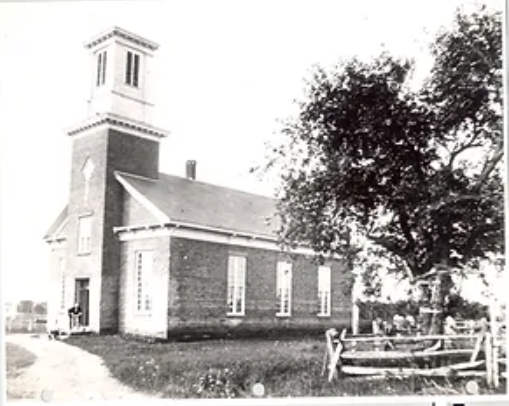In 1762—over 60 years since the first European colonists came to what would become Wayne—Richard Van Riper purchased 145 acres of land in the region, largely between what is today Berdan Ave and the Hamburg Turnpike. Here, he lived with his wife, Elizabeth Mead, and their children; Uriah, Jacob, John, Polly, Peggy, Betsy, and Richard.
Richard also developed his property into a farm supported by the labor of at least six enslaved people- Harry, Prince, Mary, Annich, Hannah, and Dine.
When Richard and Elizabeth’s eldest son, Uriah, married neighbor (and literal girl next door) Maria Berdan in 1786, Richard granted them a parcel of his property on which to build a home; Richard’s 1807 will notes “a piece of land which [Uriah] now holds in possession which I estimate at the value of sixty-two dollars and fifty cents.” This smaller property became the site of the Van Riper-Hopper House, which was likely built ca. 1786 as a two-room structure providing multipurpose living and working space. It also included access to a cellar underneath the home and a loft above. The newlyweds developed the surrounding property into a farm.
Five generations of the Van Riper family would go on to occupy the house, and as the family grew, so too did the home. Expansion in the mid-19th century likely included the construction of the parlor to connect the 1786 home to an adjacent one-room structure, which dates to the mid-18th century. The Van Riper-Hopper House would come to boast five main rooms on the first floor and a garret above. The property likely had outbuildings surrounding it, such as a barn and a privy, which do not survive today.
In 1872, the home earned its full name with the marriage of Mary Ann Van Riper, great-granddaughter of Uriah, and Andrew Hopper. The Van Riper-Hoppers were the last of the Van Riper descendants to live in the home, selling the property by the end of the 1920s.

Getting to Know the Van Ripers
The Van Ripers descended from Juriaen Thomasse, who immigrated to Bergantown, New Jersey from the Netherlands in 1663. Once in Wayne, they became prominent members of the local community.

With five generations living successively at the Van Riper-Hopper House, the Van Ripers boasted a large extended family. They often intermarried with other Dutch families in Wayne, and by the early 20th century, they boasted connections with the Kips, Jarolomons, Posts, and more. They also owned property in Paterson and throughout the Preakness section of Wayne.
According to genealogical research compiled by the Daughters of the American Revolution, Richard Van Riper may have served in the New Jersey militia. His descendants would go on to become involved in local politics and were present at Wayne’s first township meeting in 1847.
Grandson Jacob B Van Riper was one of Wayne’s first Judges of Appeal. Great-grandson Uriah J Van Riper, memorialized by the New York Times in 1879 as “one of the most widely known men in Passaic County,” was one of Wayne’s initial Surveyors of Highways, President of the Passaic County Board of Assessors, and the government agricultural reporter for Passaic County.

Van Riper family members attended services at Preakness Reformed Church (see above) and were often involved in the religious community there. Jacob B Van Riper and Uriah J. Van Riper purchased front- and second-row pews when Preakness Reformed Church was rebuilt in the 1850s. Jacob’s sister, Elizabeth De Witt, and his wife, Mary, both contributed financially to the church’s subscription funds, leading to the construction of a Parsonage House and outbuildings onsite.
In 1846, Uriah J Van Riper was even the Treasurer of the Parsonage Subscription Fund. Besides financial contributions, Van Riper family members also offered their talents and opened their residences to the church; before her 1877 wedding, Sarah Elizabeth Van Riper was the church organist, and ten years earlier, Preakness Reformed Church’s pastor boarded with Sarah’s aunt, Lean Ann.
Farming in Wayne
The Van Riper-Hopper House was one of the countless farmsteads in Wayne, producing agricultural goods for the local community and surrounding areas. By the 20th century, the Hoppers were identified in newspapers as “truck farmers”, meaning that they were farming on a larger scale, primarily to ship to markets outside of Wayne. This would have been aided by the introduction of railroads and refrigerated boxcars in the latter half of the 19th century.

While Van Riper family members performed some of the farm work, they were also aided by both enslaved and paid servants, including Barney Winter, Tom Jackson, John Vanbibin, and more. Annich was enslaved by the Van Ripers from the 1810s to the 1840s when it appears she was freed by the family but continued to labor onsite. You can learn more about her life as an enslaved woman at the Van Riper-Hopper House here.
While we don’t know specifically what the Van Ripers grew onsite, family recollections and surviving records shed some light on their agricultural output. In 1817, Uriah Van Riper purchased a cowbell and a churn from his father’s estate, suggesting the presence of dairy cows on his property. In his will, Jacob B Van Riper left his wife Mary “my two carriages [and] harness”, likely pulled by horses.

Bertha Hopper, wife of Mary Ann Van Riper’s son Henry, would later recall of the property that “there were pastures all around, where cows and horses grazed.” In 1860, the State of New Jersey returns recorded Wayne’s agricultural output for the year, which would have included Van Riper’s produce. The township’s livestock included sheep, horses, donkeys, milk cows, cattle, oxen, and pigs, while large-scale crops included wheat, rye, corn, oats, potatoes, hay, butter, and honey.
Preserving Van Riper-Hopper
The last Van Riper-Hopper descendants sold the home in the 1920s. After being rented by several farming families in the 1930s, the home was purchased by William and Rita Rehers. The couple modernized the home, installing new plumbing, a hot water system, and a boiler. In 1960, the house came under threat by the construction of the Passaic Valley Water Commission’s Point View Reservoir.


Through the efforts of the Wayne Historical Commission, the home was purchased by Wayne Township and preserved. In the summer of 1964, the Van Riper-Hopper House was dedicated as a museum, and in 1972, the home was officially recognized by both the State and National Register of Historic Places.

